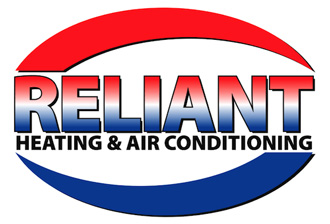
A furnace is often a background player in your home, keeping you warm in the cold winter months. It often isn't noticed until something goes wrong.
One source may be that your furnace has a cracked heat exchanger. It can potentially be hazardous, so it’s critical to learn the symptoms of a cracked heat exchanger and what you can do if you suspect that may be the problem.
What Is a Heat Exchanger in a Furnace?
A heat exchanger transfers heat from the combustion chamber inside your furnace to the air that moves through the system. It generally does this using coils or tubes that warm the air while acting as a barrier to keep gas formed in the combustion chamber, called flue gasses, from getting out into your home.
Is a Cracked Heat Exchanger Dangerous?
Because of its key role, it shouldn't come as a surprise that a damaged heat exchanger can be very dangerous. A damaged heat exchanger can permit dangerous gasses – such as carbon monoxide, which can be lethal – to be distributed across your home.
For this reason, don't ever run your heater if you believe it has a cracked heat exchanger, as letting it run could make your entire household sick. Reach out to an HVAC professional as soon as possible if you are worried your heater has a cracked heat exchanger that needs repair.
Four Symptoms of a Cracked Heat Exchanger:
- Furnace shuts off: Cracks in the heat exchanger could cause your furnace to turn off.
- Strange Smells: If the air escaping your furnace has a strong chemical smell, it could be a sign gas is leaking through cracks in your heat exchanger. These byproducts, which may smell like formaldehyde, are a major warning sign.
- Carbon monoxide alarm is triggered or you notice symptoms of poisoning: If a cracked heat exchanger is emitting carbon monoxide into your home, your carbon monoxide alarm should go off or household members may struggle with signs of carbon monoxide poisoning. Symptoms include headaches, dizziness, weakness, nausea, vomiting or feeling drowsy. If your alarm goes off or you feel sick, exit the home immediately and then call for help.
- Soot: If you notice black sooty buildup near the exterior of your furnace, it’s another sign something may be seriously wrong.
What You Can Do if Your Furnace Heat Exchanger is Cracked
If you believe your furnace has a cracked heat exchanger, call a pro with extensive experience in furnace installation Clearwater right away so they can inspect your system and, if needed, start a furnace heat exchanger replacement. Costs often fluctuate depending on the situation, but estimates can roughly suggest $1,000 to $3,000.
Fortunately, the good news is that heat exchangers are often included in the warranty. You should check the warranty paperwork on your furnace, as while the warranty may not cover the entire cost of repairs, it could significantly lower your bill.
How to Avoid a Cracked Heat Exchanger in Your Home
One of the best ways to minimize the risk of problems in your furnace overall is with regular furnace maintenance. Furnaces offer the most benefits when they operate efficiently. Hiring a certified professional to inspect your furnace for worn-out parts, dirty filters and other common problems can keep you from getting a big bill later on.
It’s also beneficial to take a look at your furnace filters every few months – it’s recommended some filters be changed every 90 days or sooner if they are dirty or grimy. While the filters aren't a part of the heat exchanger itself, the strain of drawing air through a clogged filter makes the entire furnace work longer to complete its job. And the harder your furnace needs to run, the more deterioration parts like the heat exchanger will sustain.
